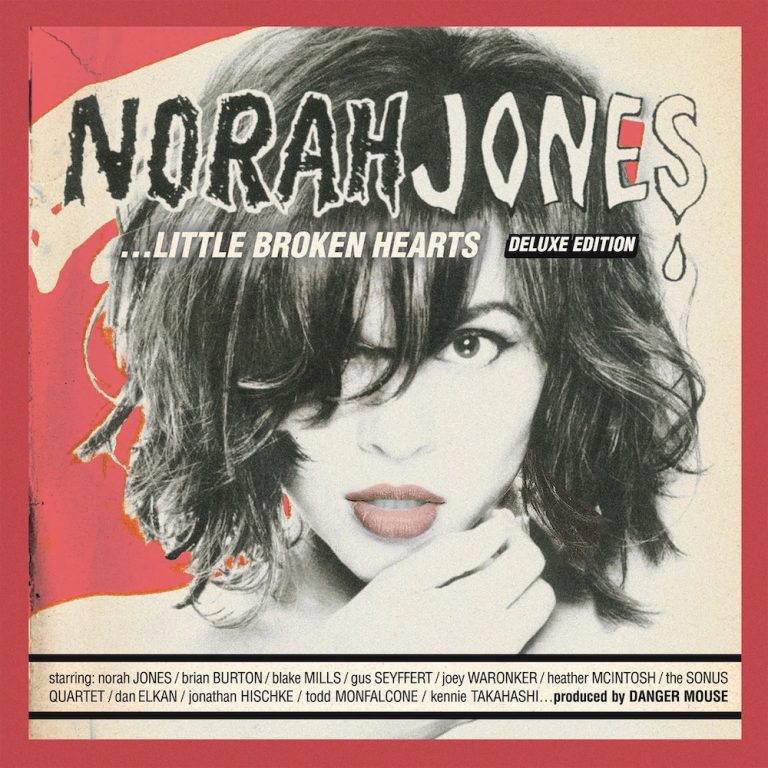With the release of her phenomenally successful debut album, 2002’s “Come Away With Me,” Norah Jones arrived fully formed as a jazz superstar for the 21st century. Released on the legendary Blue Note label and featuring the talents of heavyweight instrumentalists including guitarist Bill Frisell and drummer Brian Blade there was no denying its jazz credentials. Jones sealed her reputation with the release of “Feels Like Home” in 2004, “Not Too Late” in 2007 and “The Fall” in 2009 – a run that led Billboard to name her the top jazz recording artist of the 2000s.
But with her fifth album, 2012’s “Little Broken Hearts,” Jones defied all expectations, collaborating with renowned producer Danger Mouse to create a work that sidesteps easy genre categorisation. If Jones was looking for an injection of maverick energy, she couldn’t have picked a better co-conspirator than Danger Mouse – aka Brian Burton. He’d burst onto the scene in 2004 with the release of “The Grey Album,” his daring mashup of vocals from Jay-Z’s “The Black Album” and samples from The Beatles’ “The White Album.” Since then, he’d amassed an eclectic discography, forming soul duo Gnarls Barkley with singer CeeLo Green, and collaborating with underground rapper MF DOOM as Danger Doom, and with MC Black Thought of hip-hop group The Roots. He’d also built a solid reputation as an in-demand and highly imaginative producer, adding his creative touch to albums by artists as diverse as British cartoon-pop band Gorillaz, US indie darling Beck, and American rock duo The Black Keys.

Jones and Burton’s first publicised work together was released in 2011, with Jones supplying vocals for three tracks on “Rome,” Burton’s typically quixotic collaboration with Italian composer Daniel Luppi, inspired by the pair’s shared love of 1960s Italian film soundtracks. But, in fact, Jones and Burton had first started to make music together back in 2009, spending five days in Burton’s Los Angeles studio in June that year, working on what was then a top-secret project.
Jones told Rolling Stone: “Nobody from my label or management knew we were doing it. Brian said ‘I’d rather actually collaborate, and not just be a producer – let’s go into the studio and see what happens.” Jones brought along a suite of raw lyrics composed in the fallout of a painful break up with her boyfriend, and the duo set about building instrumental tracks to match, with Jones playing piano, bass and guitar, and Burton adding drums and keyboards.
For Jones, it was a voyage of discovery quite different to her usual working methods. “I’d never gone in with nothing and wrote songs from scratch,” she recalled, “and I’d never played bass before on a record. I was out of my comfort zone – but I was comfortable because we were friends.”

I’d never played bass before on a record. I was out of my comfort zone – but I was comfortable because we were friends
Norah Jones
After a break of two years, during which each worked on different projects, the duo reconvened in summer 2011, and put the finishing touches to the album that became “Little Broken Hearts.” On its release the following year, it unveiled a brand-new sonic identity for Jones, moving away from the familiar warmth of her earlier releases to present a more experimental approach, with her emotionally charged confessionals augmented by electronics, fuzzed-out guitars and distorted vocal effects – and prompting SPIN to proclaim it “the second essential record of Norah Jones’ career.” Over a decade on, Jones paid tribute to the lasting impact Burton had on her creative evolution: “I’m incredibly thankful to Danger Mouse for letting me explore with him and opening my world up to a new way of doing things that continues to inspire and influence me.”
Daniel Spicer is a Brighton-based writer, broadcaster and poet with bylines in The Wire, Jazzwise, Songlines and The Quietus. He’s also the author of a book on Turkish psychedelic music and an anthology of articles from the Jazzwise archives.
Header image: Blue Note Records



